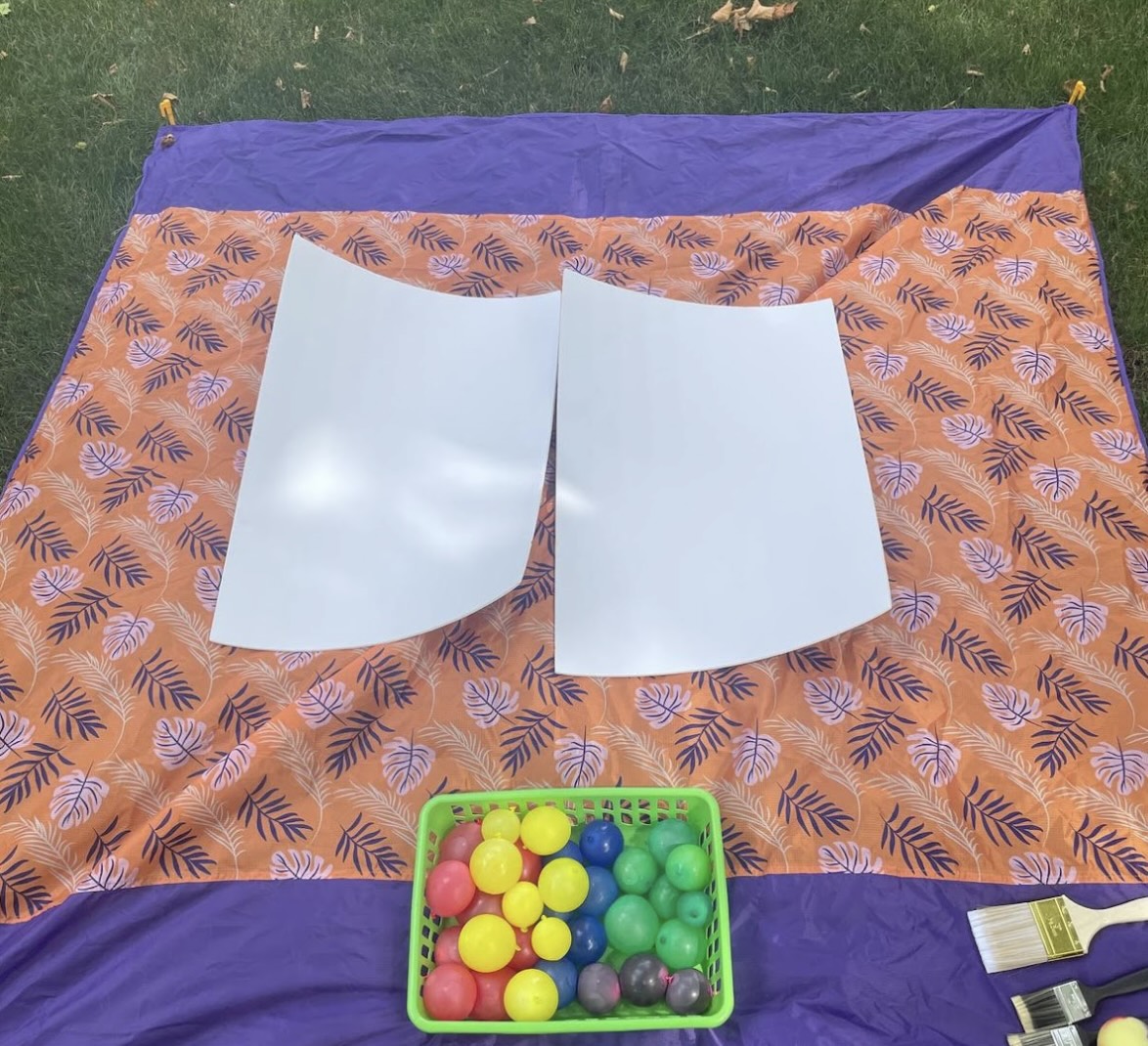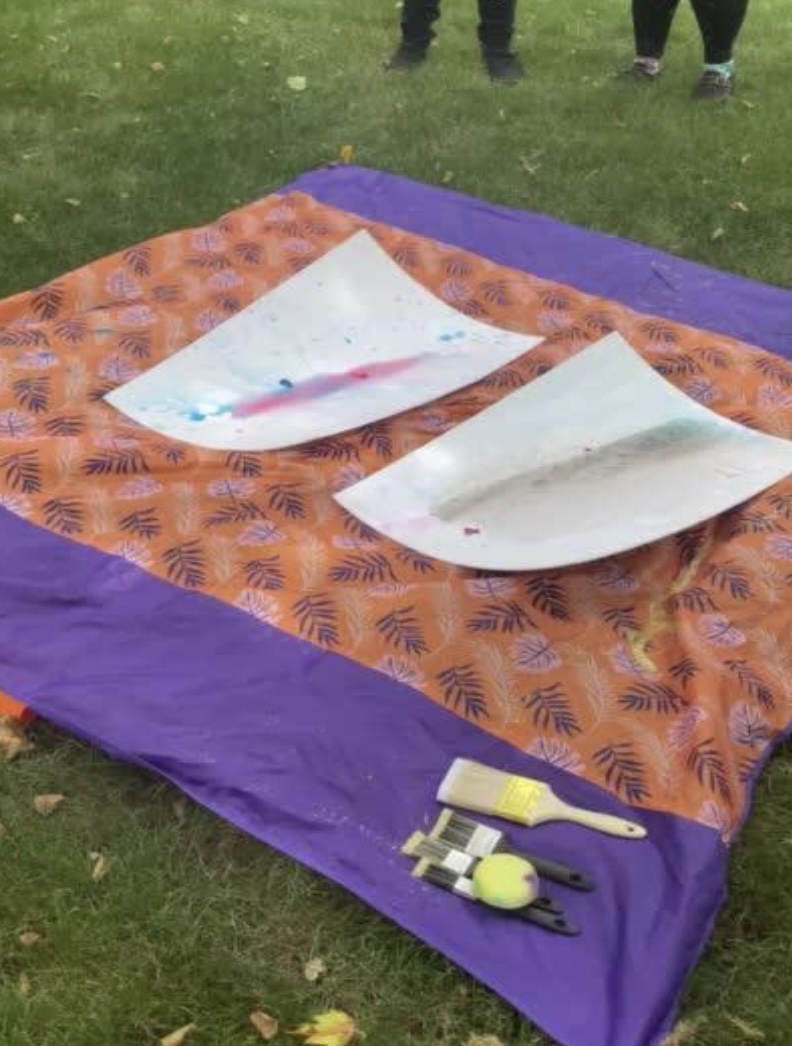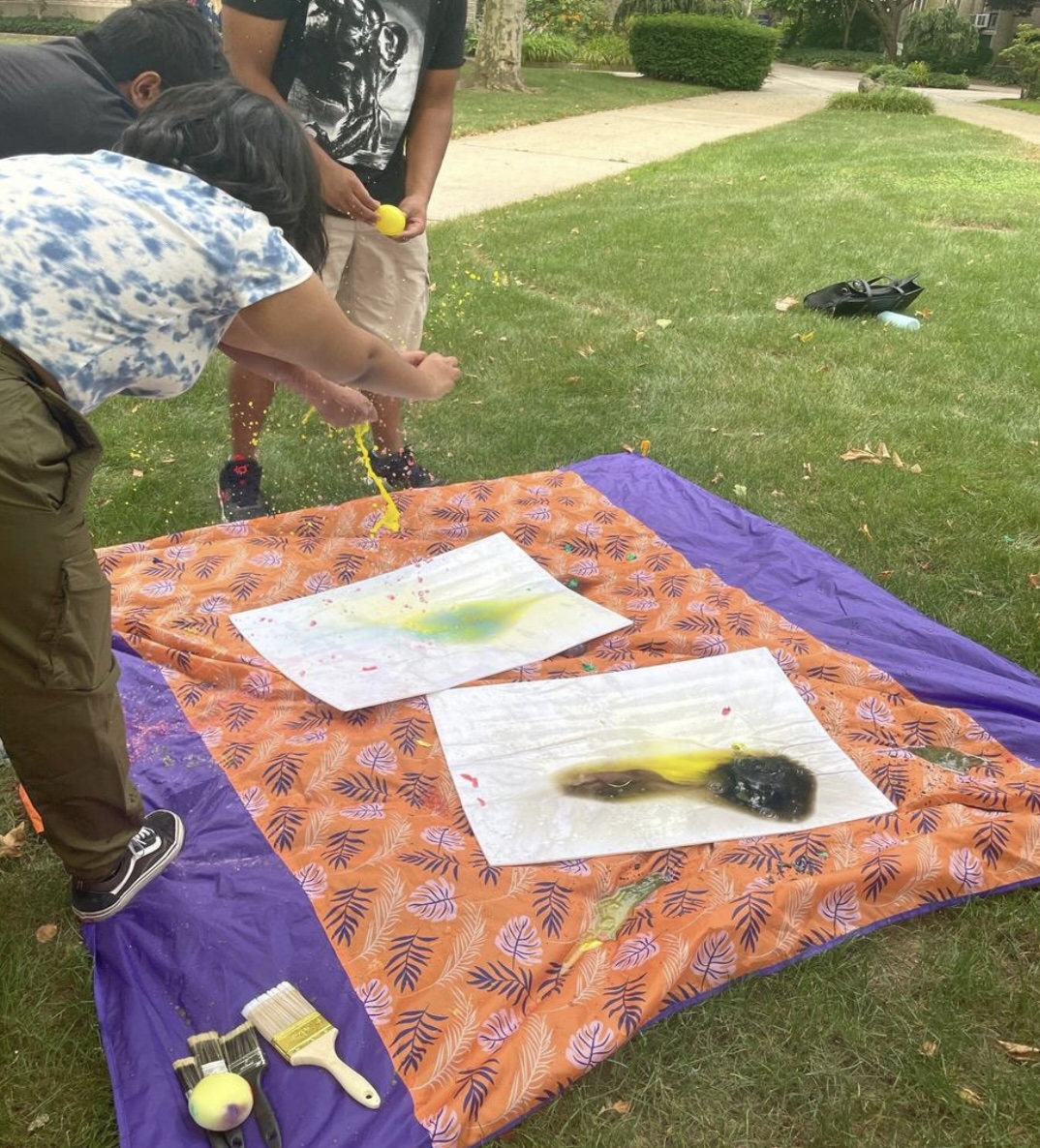October 16, 2023 | By Fenghua Jin, MA
The museum visit, paired with art-making, provides participants with an elevation of their museum experience, especially those who report rarely making or creating art themselves. What I have observed through my project on integrating art therapy in a museum was how connecting different community members over art-making fosters group cohesion as a sense of belonging in a museum. It allowed my participants to momentarily focus on the present moment, reducing their integrative social anxiety after any socially isolating event and promoting emotional wellness. Participants who created art in my project expressed a sense of spontaneity that came naturally and shared more insight into one’s mindset when feeling and experiencing isolation.
Art Therapy Project at The Hofstra University Museum of Art
While this project took place during the time of COVID-19 post-lockdown, where feelings of isolation and loneliness were more present, my hope is to communicate to future and current practitioners the potential of community integration and enhanced states of well-being when art is paired in a museum setting. My participants had to be spontaneous and live in the moment, especially with the uncertainty of the future. Such a response of spontaneity and the connection with others through art can decrease a sense of isolation and promote emotional wellness. Museums are shared spaces, open to the public and accessible to many and by incorporating group art therapy in such a community setting can support positive states of feeling and emotion and improve negative conditions of feeling and emotion when paired together.
There were two groups, where both explored the familiar process of visiting an art museum. Only one of the groups got the chance to create art post-museum visit. Each visit was less than an hour. Participants were between the ages of 18 and 36 and recruited from the general community around Hofstra University‘s campus. One was a group of 8, the experiential group making the art post-visit, and the other group of 5 who did not make art after the museum visit. .
On a hot summer day, I chose to have the experiential group create a watercolor balloon mural art. Colored acrylic ink drops were pre-added with the water into each balloon according to the balloon color. The watercolor balloon choice was simple, easy to use, and explorative, allowing participants to play outside, hopefully eliminating the intimidation of creating something specific, as this medium is difficult to control.
The setup before the experimental group arrived to process and create the mural art. I met with each group and visited the museum with them as it was free and accessible to the public. A total of 13 participants consented to the project.

Due to the unexpected results of the watercolor balloons and the ink not staining onto the canvas, the results from the community mural boards emphasized the creative outlet and the process.
At the beginning of the process, group members were standing far away from the canvases and throwing the balloon at the mural board.

One member of the group recognized that the balloon was not exploding when members were standing further away from the mural and began to squeeze it over the board instead.

Participants that created art reported an overall increase in their positive affect (a term for the internal feeling states that occurs when a goal has been achieved, or the individual is satisfied with the present state of affairs) in the post-survey, after the museum visit and art-making session. Eighty-seven percent of participants reported feeling ‘quite a bit to extremely’ enthusiastic about their experience.
Tips for Implementing Art Therapy Project at a Museum
While museum visits themself are great, the group that made art had their experience enhanced because of the positive results. Here are three further recommendations for art therapists if they were to implement a similar art directive at a museum:
- Choose a medium and directive that is non-threatening and can spark curiosity. Curiosity can help build social bonds by promoting behaviors such as engagement, responsiveness, and flexibility to others’ varied experiences.
- Test the materials beforehand to ensure that your intentions with the medium (especially if choosing mixed media) are complementary and will produce the therapeutic results you intend, otherwise the focus becomes about the process which produces a different outcome.
- Have a museum space or studio in the building for art making as it will minimize the additional logistics and potential weather inconveniences if bringing the group outside. Consider reaching out to the museum to see if there is space available for use or if the museum can be open past the typical working hours of 9-5pm. Be aware that having the group come together during the last hour before closing can result in staff members interrupting the process by reminding others of the time.
Artmaking provides an outlet for different individuals of various backgrounds to come together, practicing flexibility and adaptability during the art making, and allowing themselves to be collaboratively creative in a group setting.
About Fenghua (Fen) Jin

Fenghua (Fen) Jin is a first-generation Chinese Canadian working in New York. Fenghua is presently working with minorities, specifically the Chinese community of Brooklyn and Queens, focusing on generational trauma, cultural transitions and change. She hopes to continue to work with either integrating art therapy in museum programs in the future or the underrepresented and minority communities to foster resilience and cultural integration through the arts.
For further insight into some of the artwork and experientials created, connect with Fenghua on Instagram: @fensarttherapy
References
Gabel, A., & Robb, M. (2017). (Re)considering psychological constructs: A thematic synthesis defining five therapeutic factors in group art therapy. The Arts in Psychotherapy, 55, 126–135. https://doi.org/10.1016/j.aip.2017.05.005
Ivbijaro, G., Brooks, C., Kolkiewicz, L., Sunkel, C., & Long, A. (2020). Psychological impact and psychosocial consequences of the covid 19 pandemicresilience, mental well-being, and the coronavirus pandemic. Indian Journal of Psychiatry, 62(9), 395. https://doi.org/10.4103/psychiatry.indianjpsychiatry_1031_20
